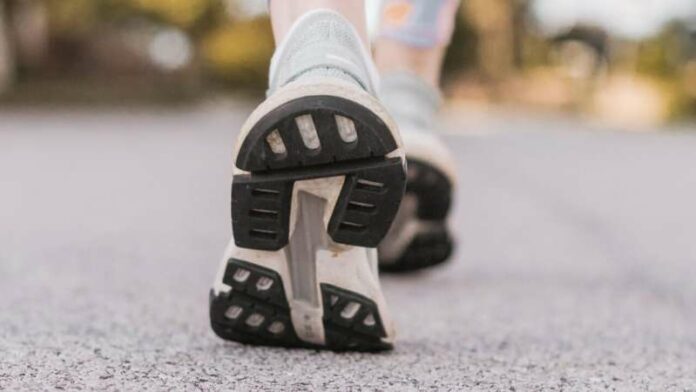The most common musculoskeletal injuries are ankle strains. They involve the stretched and torn ligament in the joint. Even a minor misstep that leads to a strain can have an impact on a person’s physical activity and quality of life.
The prevention and recovery of ankle sprains involve passive support externally. For example, braces and tape. However, these solutions can cause problems.
Passive methods, when used long-term can cause weakness in the supporting muscles and soft tissues around the joint. It makes a person rely on their perpetual use. Although restricting the motion of the joint can prevent injuries in the future, the ankle is unable to deal with disturbances compared to normal. For example, uneven terrain without additional support. Moreover, it alters the function of the foot and leg negatively.
SUEDE Ankle Support System
A team of researchers at Arizona State University is working on making an active automated ankle support system. It will overcome the limitations in the current treatment methods.
SUEDE (smart user effective enabled data) shoe is a smart wearable shoe system. It doesn’t hinder the natural motion of the ankle and actively supports it. The soft brace of the shoe can adjust the stiffness according to the needs of the user. It is very different from the traditional support tapes and braces.
Hyunglae Lee, who is leading the team developing the SUEDE shoe said,
“Wearable devices can provide continuous support to the human user during daily activities.”
“With recent advances in sensor and actuator technologies and control and machine learning algorithms, we also expect the wearable device will be smarter, smaller and more comfortable.”
Real-Time Injury Risk Assessment
The SUEDE shoe will provide users with real-time, injury and risk assessment. It will help users follow the treatment guidelines through their smartphone-based interface.
Lee, in charge of the biochemical modeling of ankle mechanics and development of soft active ankle brace, said,
“The active smart shoe system requires a tight integration of innovations in sensor data processing, smart actuation, biomechanical modelling, injury prediction and closed-loop control, and extensive user experience study and clinical integration study, which cannot be achieved without an interdisciplinary team of engineers, behavioural science researchers and clinicians”
He further added,
“Our lab, the Neuromuscular Control and Human Robotics Laboratory, has developed a patented novel robotic platform to characterise ankle mechanics and ankle stability during functional tasks, including dynamic walking”
“We have also developed a soft robotic ankle device and evaluated its effectiveness over the rigid counterpart.”
Sze Zheng Yong brings his expertise to the smart shoe, emphasizing safety. It is a primary concern for wearable devices. He said,
Pavan Turaga is behind the expertise in machine learning and modelling complex. In addition to the sensor data processing along with the activity recognition of SUEDE shoe.
He said,
“Ankle biomechanics is a prime example of a complex dynamical system, where many important parameters are not directly observed,” Turaga says. “Machine-learning-based approaches can help bridge those gaps.”
Matthew Buman is behind design and implementation of the intuitive user interface. He also evaluates the usability and the support system of the smart shoe.
Innovative Approach
The team of ASU is taking an innovative approach by designing the system using advanced system. For example, sensors, control theory, clinical practice, and machine learning.
Turaga says,
“These areas have not been brought together for ankle biomechanics with this degree of precision and coherence before.”
The team will develop the SUEDE shoe system throughout the project, which will go on for four years. The researchers will be quantifying and modelling the movement of a healthy ankle. Moreover, they will integrate an algorithm for injury protecting and determine when an injured ankle needs active support. It will help in the prevention of strains.
Algorithm and User Interface
The team will continue with refining the user interface and algorithm of the group throughout the project. Furthermore, they will evaluate and validate the SUEDE shoe system with the help of other clinical partners.
Mark Jagodzinski who has tremendous experience in rehabilitation of ankles will work with the ASU team and design the protocols of treatment. In addition to Ryan Scott who is an orthopaedic surgeon. They will plan and assess the performance measures, evaluating the efficiency of SUEDE Shoe. In addition to the approach of this shoe in patient groups.
Beneificial to Clinicians
There is an expectation that the SUEDE shoe will help clinicians because they will understand the mechanics better. They will know how the foot and ankle mechanism is along with their correlation during multiple physical activities. Furthermore, they will help their patients with timely and effective feedback regarding their injuries and their prevention.
The team enthusiastically wants to improve lives through its innovation
Turaga said,
“Human movement and biomechanics are very complex phenomena, a deeper understanding of which can directly impact human health and simultaneously makes for high stakes as well as high impact”
“I find the potential for impact the most exciting aspect.”




